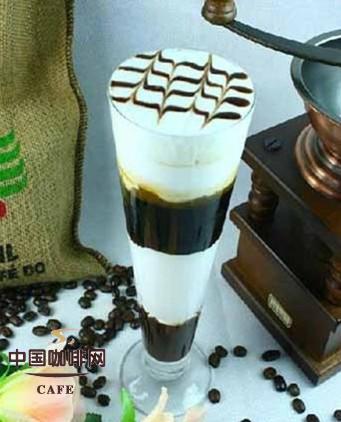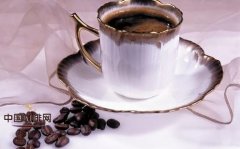Coffee common sense only by choosing a coffee machine can you grind good coffee

Brewing coffee at home, the taste not only depends on the quality of the coffee beans, the bean grinder also plays a great role!
The beans and machines that some people sell are high-end, expensive and technical, but the taste of coffee is always lacking; it often has a lot to do with bean grinders. An ideal bean grinder requires less heat production in the grinding process, uniform grinding particles and almost no electrostatic fine powder. Because if it produces too much heat, it will cause the rapid loss of coffee aroma, uneven grinding will cause insufficient or excessive extraction, and static electricity will have a greater impact on Espresso.
Therefore, a good bean grinder is still very important for the taste of coffee!
Hand grinder-simple shape, conical grinding tools to grind the beans, the function and appearance have hardly changed for hundreds of years, very good taste of life!
The advantage is that there is no need to plug in, quiet, uniform particles, and there will be no overheating! The disadvantage is that if you grind a lot of coffee beans, you will be very tired! Hand grinding bean machine is more suitable for family use, because the general constant of drinking coffee will not be very large, shaking by hand will not be very tired, but the coffee made will taste better.
Small electric bean grinder-two blades rotate to cut up the beans, the disadvantage is more heat production, grinding bean particles are more uneven, will produce static electricity, their own coffee at home is recommended not to use, because it has a greater impact on the taste of coffee. But for some small coffee shops, in the case of insufficient budget, you can consider, because the hand is too tired, other bean grinders exceed the budget, you can choose it!
Medium-sized bean grinders, such as Flying Eagle and Pegasus, are relatively well-known. This kind of bean grinder has the advantages of large amount of bean grinding, while its disadvantage is high noise and static electricity, but ordinary coffee shops can consider buying it because it grinds beans in a large amount and saves time and effort. Brewing single coffee is very suitable!
Top Bean Mill-this kind of bean grinder is very suitable for large coffee shops, because it is suitable for Espresso, with semi-automatic coffee machine, but the noise is also a little louder, of course, it is absolutely the first choice for those who love coffee very much if economic conditions permit!
[grinding essentials]
No matter what kind of bean grinder you use, you should master a few essentials:
1. The particle size should be uniform.
If it is uneven, the brewed coffee will taste incongruous. The finer the grinding particles, the more coffee ingredients are extracted, and the thicker the particles are, the less ingredients are extracted.
In order not to destroy the original aroma of coffee, care should be taken when grinding to make sure that the particles are uniform.
2. Avoid friction heat production
High-speed grinding of coffee beans will generate heat due to friction, which will deteriorate the coffee powder or lose the aroma components of the coffee. Manual grinders are particularly easy to produce heat, so attention should be paid to slow grinding.
3. Remove fine powder
When grinding coffee beans, it will produce some fine powder, such as mixing it, which will release bitter substances such as tannins when brewing. Fine powder is produced more in the use of electric bean grinder, some electric bean grinder with the function of automatic removal of fine powder, usually can be removed manually. Because the fine powder is lighter than the normal coffee particles, as long as the ground particles are shaken and blown, they can be removed.
In addition to mastering the essentials of grinding, which has an impact on the taste of coffee, it is also very important to maintain the grinder.
The grinder should be cleaned immediately after the grinding is completed. The above fine powder can be attached to the grinder, and the taste of coffee will become worse after repeated use. Fine powder can be removed with a small brush.
In addition, rotary grinding teeth should also be cleaned. Coffee bean oil and fine powder adhere to the above, will affect its normal operation, can be cleaned with a fine bamboo stick or toothbrush.
Important Notice :
前街咖啡 FrontStreet Coffee has moved to new addredd:
FrontStreet Coffee Address: 315,Donghua East Road,GuangZhou
Tel:020 38364473
- Prev

A brief introduction to the knowledge of Fine Coffee in Yemen Moka Coffee
The oldest coffee in the world-- Yemeni mocha Coffee Origin: Yemeni Grade: excellent granule: full acidity: slightly sour and strong aftereffect, but also sweetness evenness: smooth roasting: moderate flavor: chocolate flavor, slightly alcoholic flavor. Spicy Ethiopia is the first country in the world to find coffee, but Yemen is the first country in the world to use coffee as a crop.
- Next

Coffee can cure halitosis. If you want fresh breath, you might as well have a cup of coffee.
Experts accidentally discovered this magical effect of coffee in the experiment. Previously, it was generally believed that drinking coffee would make you have a bad breath. In fact, when coffee is mixed with milk, it dehydrates inside the mouth and ferments to produce odorous substances. The team chose two types of Arabica coffee and put them in a glass tube filled with saliva. They initially hoped that the experiment would prove that coffee
Related
- Beginners will see the "Coffee pull flower" guide!
- What is the difference between ice blog purified milk and ordinary milk coffee?
- Why is the Philippines the largest producer of crops in Liberia?
- For coffee extraction, should the fine powder be retained?
- How does extracted espresso fill pressed powder? How much strength does it take to press the powder?
- How to make jasmine cold extract coffee? Is the jasmine + latte good?
- Will this little toy really make the coffee taste better? How does Lily Drip affect coffee extraction?
- Will the action of slapping the filter cup also affect coffee extraction?
- What's the difference between powder-to-water ratio and powder-to-liquid ratio?
- What is the Ethiopian local species? What does it have to do with Heirloom native species?

